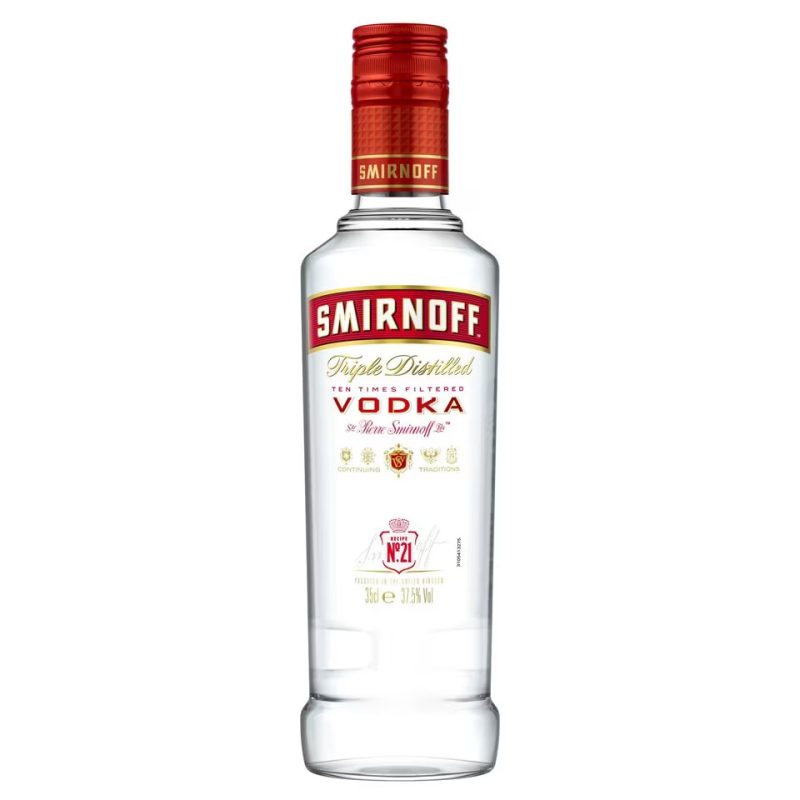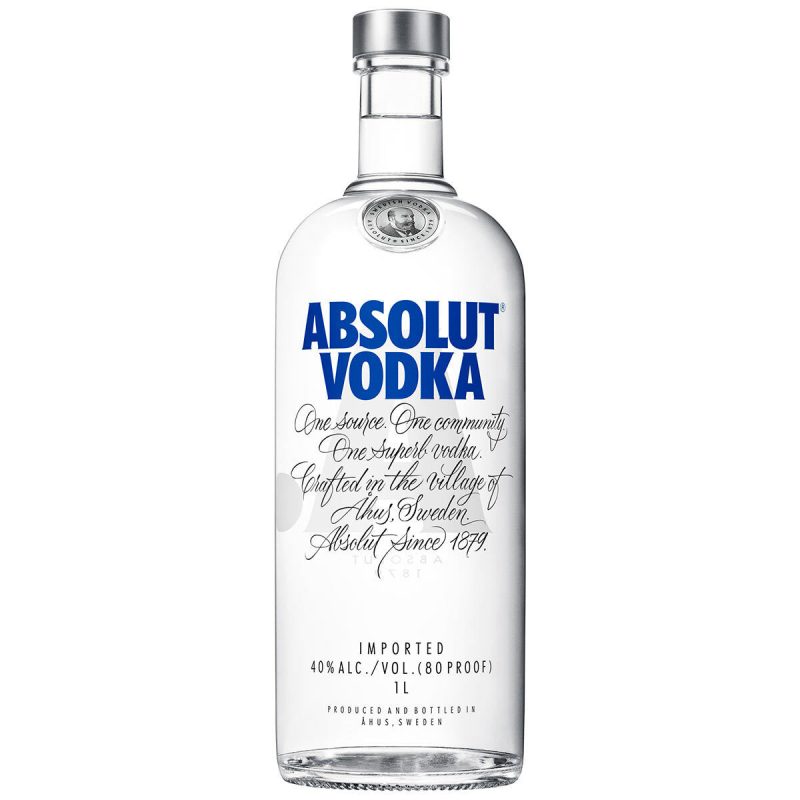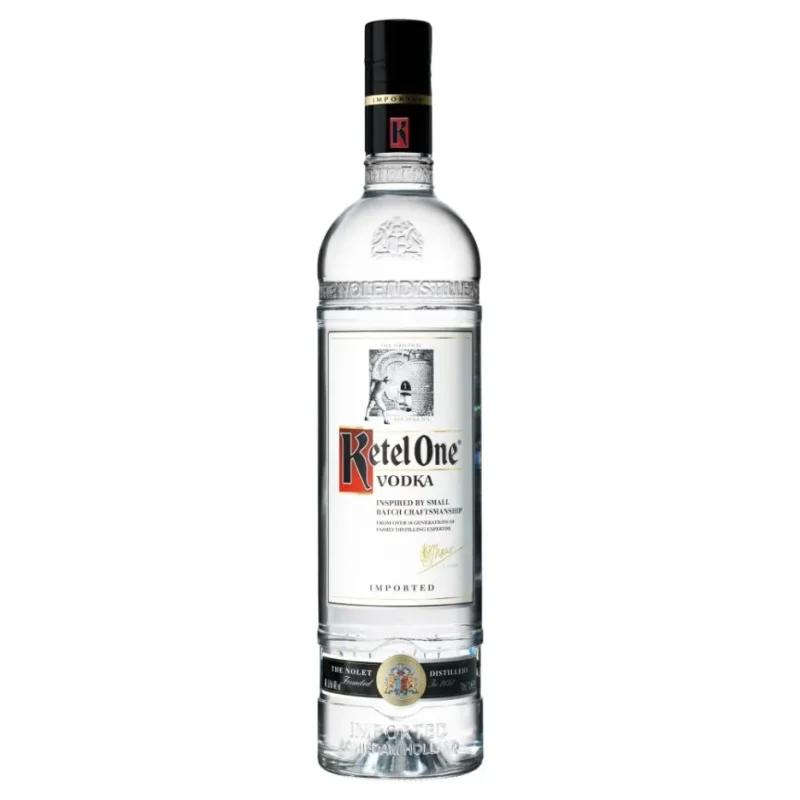Vodka - the clear, smooth, and versatile spirit has graced our drinks cabinets, bars, and cocktail recipes for centuries. But have you ever stopped to wonder how this seemingly simple beverage is crafted, and what brings about its distinctive taste and character? Join us as we journey through the fascinating process of vodka production, discover intriguing facts along the way and appreciate the artistry that goes into crafting the perfect bottle of vodka.
Best Budget Vodkas Ranked
Choosing the Raw Materials
Vodka can be made from a variety of raw materials, including grains (such as wheat, rye, and corn), potatoes, fruits, and even sugar. The choice of ingredients significantly affects the final product's taste and texture. For example:
- Wheat: Vodkas made from wheat are often smooth and slightly sweet.
- Rye: Rye-based vodkas are typically spicy, with a fuller body and more complex flavor.
- Corn: Corn vodka tends to be very mild, with a pleasant sweetness.
- Potato: Potato vodkas are known for their creamy, rich texture and subtle earthy flavor.
Fermentation
Once the raw materials are selected and prepared, the production process officially kicks off with fermentation. This involves adding water and yeast to the mashed raw material to convert sugars into alcohol. The yeast consumes the sugar present in the starchy raw materials and gradually produces ethanol and carbon dioxide. Fermentation generally takes several days to complete, and the result is a liquid with an alcohol content of about 10-15%, known as the "mash" or "wash."
Distillation
Distillation is the crucial step that separates the alcohol from the mash, increasing its concentration and purifying the spirit. The most common method for vodka production is by using continuous column stills, where the wash is heated and the rising alcohol vapors are collected after passing through a series of plates. After several rounds of distillation, the alcohol content increases to around 95-96%. Distillation also removes impurities and undesirable byproducts, helping create a clean, smooth final product.
Additional Distillation and Filtration Techniques
Many premium vodka brands pay special attention to their distillation and filtration methods, claiming that these additional steps make their product superior to others. Examples of these techniques include:
- Copper Pot Stills: Some distillers prefer to use copper pot stills for added purifying effects and smoother taste of the vodka.
- Multiple Distillations: High-end vodkas may undergo multiple distillations (often more than five times) for increased purity and smoothness.
- Filtration: Filtering the vodka through materials like charcoal, quartz, or silver is said to enhance the spirit's taste, aroma, and clarity.
Dilution and Bottling
Once distilled, the vodka's alcohol content is too high for consumption (around 95%-96%). It is diluted with water to reach a standard strength of 40% alcohol by volume (ABV) for consumption. Water quality plays a vital role in retaining the vodka's taste and smoothness. Some brands even use mineral-enhanced or naturally filtered water sources to maintain the highest quality.
Finally, once the vodka has reached the desired strength, it is often chilled and filtered again before being bottled and sent off to be enjoyed by consumers worldwide.
How Is Vodka Made Example:
Take the leading brand Absolut Vodka as a prime example of the process described above:
- Absolut uses locally sourced winter wheat from Sweden and pure deep-well water to create its signature taste.
- The wheat is mashed and fermented to create the initial alcohol-containing mash.
- It then undergoes continuous distillation in a copper-lined column still to purify the spirit and capture the desired flavors.
- The distilled spirit is diluted with water, then filtered through charcoal to refine its character even further.
- Once it reaches the final quality, the vodka is bottled, and ultimately enjoyed by vodka enthusiasts globally.
Now that we've unraveled the intricate process of vodka production, we hope you've gained a newfound appreciation for the craftsmanship that goes into creating your favorite spirit. Let this knowledge enhance your enjoyment of vodka and inspire your curious palate to explore and enjoy different brands and styles of vodka available in the market.
Feel free to share this guide with your vodka-loving friends or anyone interested in the production process of spirits. And don't forget to explore our other guides and articles at Vodka Doctors, where we keep our finger on the pulse of the ever-evolving world of vodka.
Frequently Asked Questions
What is vodka made from?
Vodka can be made from a variety of base ingredients that contain fermentable sugars or starches. Commonly, these include grains such as wheat or rye, potatoes, and sometimes fruits or sugar beet molasses.
How does the fermentation process work in vodka production?
In the fermentation process, yeast is added to the base ingredient mash. The yeast converts the sugars present in the mash into alcohol and carbon dioxide through anaerobic digestion, usually taking a few days to complete.
What role does distillation play in making vodka?
Distillation is a process used to separate alcohol from the fermented base mixture. The mixture is heated and, since alcohol has a lower boiling point than water, it vaporizes first. The alcohol vapors are then condensed back into a liquid form, which increases the alcohol content.
How many times is vodka typically distilled?
The number of times vodka is distilled varies by brand and desired purity. It can be distilled as few as two or three times, or more than five times in some cases. Some high-end vodkas boast of being distilled over ten times.
What is the significance of the number of distillations?
Each distillation can increase the purity of the alcohol by removing impurities and congeners. A higher number of distillations can lead to a smoother, cleaner tasting vodka, although too many distillations can also strip away desirable flavors.
What follows distillation in the vodka production process?
After distillation, the vodka is filtered, which can further remove impurities and provide additional smoothness to the drink. Common filtering materials include charcoal, silver, and sometimes even gold or platinum.
Why is filtration important for vodka?
Filtration is crucial for creating a pure and smooth vodka. It helps to eliminate remaining impurities and can affect the overall taste and clarity of the final product.
How does water quality affect the final vodka product?
The quality of water added post-distillation is important because it influences the mouthfeel and flavor profile of the vodka. Ideally, the water should be pure and free from any undesirable tastes or odors.
What percentage of vodka is water?
The exact percentage of water in vodka varies, but typically it makes up about 40% to 60% of the final product, as most vodkas are bottled at 80 proof (40% alcohol by volume).
Is there an aging process for vodka like there is for whiskey or rum?
Unlike whiskey or rum, vodka is not aged. It's usually bottled and sold immediately after production. While some specialty vodkas may undergo a resting period for flavor development, aging is generally not a part of traditional vodka making.
What defines a vodka as 'premium'?
A 'premium' designation is often determined by the quality of ingredients, the number of distillations, and the meticulousness of the filtration process. Branding, packaging, and marketing also play significant roles in setting premium vodka apart.
Are flavorings or additives used in vodka production?
Some vodkas are infused with flavors or additives after the distillation and filtration processes. Common flavorings include fruits, spices, and herbs. This is separate from the traditional production of unflavored vodka.
What is the legal definition of vodka?
The legal definition of vodka varies by country, but it is generally defined as a neutral spirit distilled or treated after distillation with charcoal or other materials, so as to be without distinctive character, aroma, taste, or color.
How does the raw material influence the taste of vodka?
While vodka is intended to be a neutral spirit, subtle flavors can come through based on the raw materials used. For example, potato vodka may have a creamier taste, while rye vodka could have a slight spiciness.
What makes some vodka cloudy?
Vodka can become cloudy due to impurities or additives that were not completely removed during filtration. Cloudiness can also occur when vodka is stored at very low temperatures, causing certain components to solidify temporarily.
Is vodka gluten-free?
Most vodkas made from non-grain sources, like potatoes or grapes, are naturally gluten-free. Additionally, the distillation process typically removes gluten from grain-based vodkas, making them suitable for many people with gluten sensitivities. However, it's always best to consult the manufacturer if you have concerns about allergies or intolerances.
How should vodka be stored?
Vodka should be stored in a cool, dark place, away from direct sunlight and dramatic temperature changes. It does not spoil and can be kept indefinitely, although some flavor-infused vodkas may have a best-before date.
Can vodka be used for medicinal purposes?
Historically, vodka has been used for medicinal purposes, including as an antiseptic or a disinfectant. However, it is not recommended as a substitute for medical treatment in modern times.
What is the difference between cheap and expensive vodka?
The difference between cheap and expensive vodka can include the quality of ingredients, the number of distillations, the filtration process, and the overall manufacturing process. Branding and marketing also affect the price. Expensive vodkas are often smoother and cleaner in taste, but this is subjective and individual preferences vary.
Can the production process of vodka be environmentally friendly?
Yes, some vodka producers implement sustainable practices such as using locally sourced ingredients, optimizing energy use, reducing waste, and even using recycled materials for bottling and packaging to minimize environmental impact.
Is it true that vodka can be mixed with almost anything?
One of the reasons vodka is so popular in cocktails is because of its neutral flavor profile, which makes it extremely versatile for mixing with a wide range of ingredients, including juices, sodas, and other spirits.
Why is vodka sometimes stored in the freezer?
Storing vodka in the freezer can give it a thicker, more syrup-like texture and make it smoother to drink. The cold temperature dulls the alcohol burn, although it can also mute the subtle flavors of premium vodkas.
















